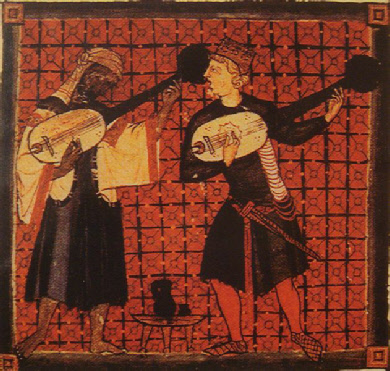0-
When we explore Medieval music, we are dealing with the longest and
most distant
period of musical history. Saint Gregory is credited with
organizing the huge repertory
of chant that developed during the first
centuries of the Christian church, hence
the term Gregorian chant. He was
pope from 590 to 604, and the Medieval era continued
into the 1400s,
so this period consists of almost a millennium's worth of music.
One of the principal difficulties in studying Medieval music is that a system
for
notating music developed only gradually. The first examples of musical
notation date
from around 900. For several centuries, notation only
indicated what pitch (or note)
to sing. The system for notating rhythm
started in the 12th or 13th century.
Gregorian chant is monophonic, meaning music that consists of only one
melodic line
without accompaniment. The beauty of chant lies in the
serene, undulating shapes
of its melody. We do not know who wrote the
melodies of Gregorian chant. Like folk
melodies, the music probably
mutated as it was passed down through generations and
eventually
reached its notated form.
Polyphony, music where two or more melodic lines are heard
simultaneously, did not
exist (or was not notated) until the 11th century.
Unlike chant, polyphony required
the participation of a composer to
combine the melodic lines in a pleasing manner.
Although most Medieval
polyphonic music is anonymous-
lost or never written down at all-
so important that their names were preserved along with their music.
